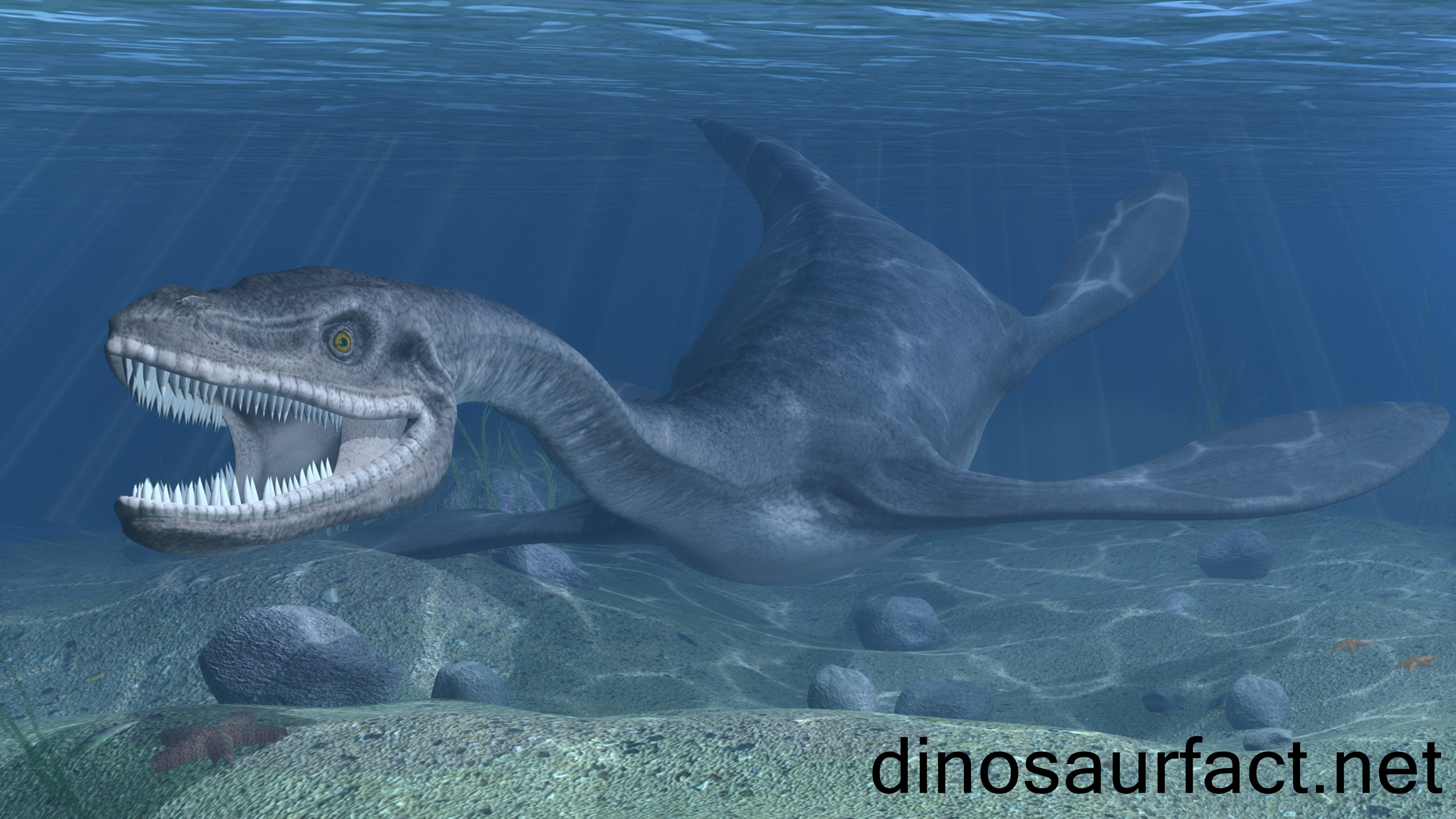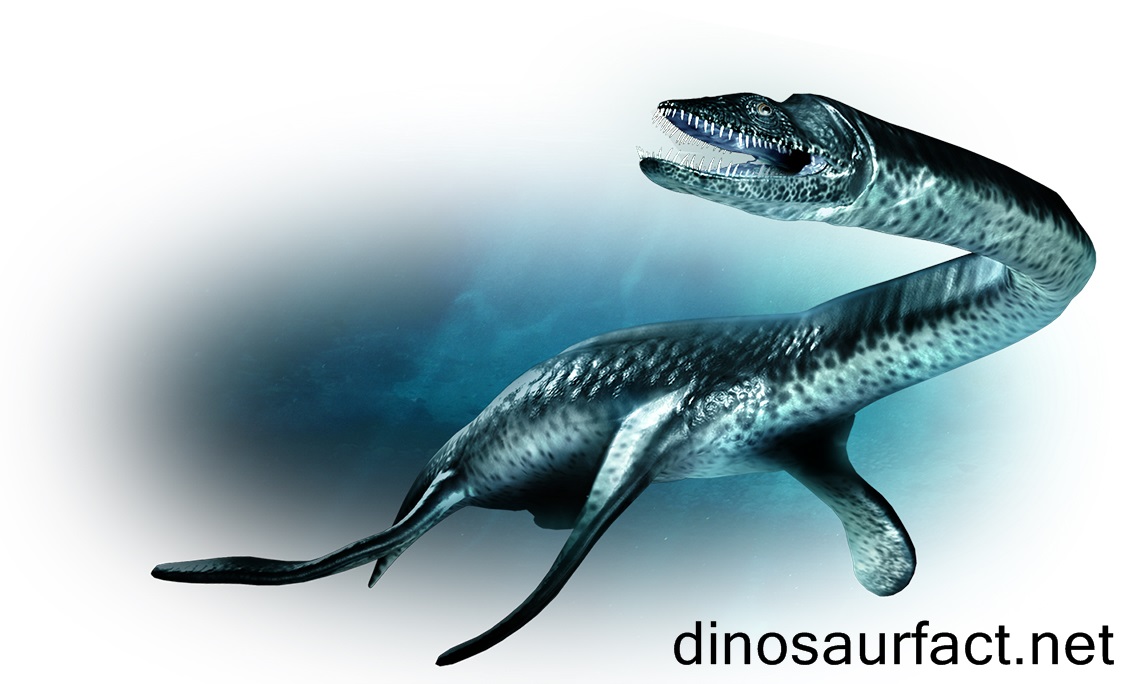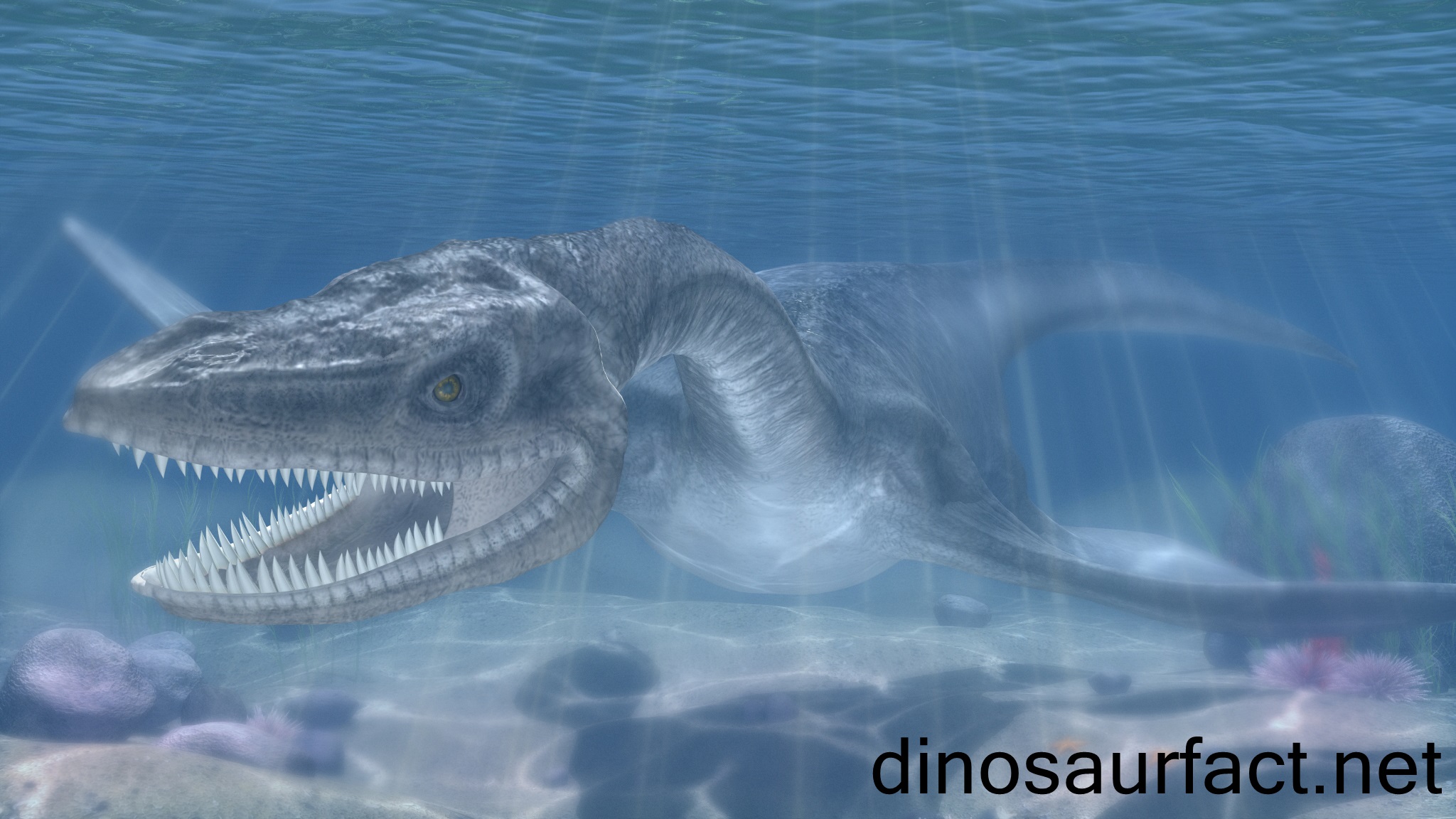 Click to visit the previous Marine Specie bio
Click to visit the previous Marine Specie bio
 |
|
 |
|
Kingdom: Animalia
Phylum: Chordata
Class: Reptilia
SuperOrder: Sauropterygia
Order: Plesiosauria
Family: Plesiosauridae
Genus: Plesiosaurus
 |
|
 |
|
 |
|

The Plesiosaurus was a moderate sized marine reptile which existed during the early Jurassic period of the Mesozoic era. It swam the oceans about 200 to 169 million years ago. This time period lies in the Hettangian and Aalenian ages of the Jurassic period. Plesiosaurs are believed to have evolved from the Triassic Nothosaurs.
The fossils of the Plesiosaur were originally discovered in England in the year 1821. At that time, very few prehistoric marine vertebrates were known to man. Due to this, any bones which even remotely resembled the Plesiosaurus were ascribed to it. As a result, defining the Plesiosaurus became very difficult. As more and more aquatic reptile fossils were discovered, they were inspected more carefully. Subsequently, the genus Plesiosaurus became better organized.
The Plesiosaurus could grow to about 3 to 4 meters in length. Its weight is debatable, but is estimated at about 150 to 350 pounds. This size was small as compared to some of the late Jurassic and early Cretaceous plesiosaurs such as the Kronosaurus which attained a length of over 10 meters. As compared to its contemporary plesiosaurs, the Plesiosaurus was of average size.
Nomenclature
The name Plesiosaurus is an amalgamation of two words. The prefix ‘plisios’ has Greek origins and translates to ‘close’ in English. The suffix ‘-saurus’ is derived from the Greek word ‘sauros’ which means ‘lizard’. The Plesiosaurus was appeared more like a reptile than the other ichthyosaurs discovered before it. Hence it was christened ‘the close lizard’.
The specific name Plesiosaurus dolichodeirus denotes ‘long necked’.
The Plesiosaurus fossils were named by William Conybeare.
Discovery of fossils
The remains of the Plesiosaurus were found in the Lias Formation in England in 1821. They were uncovered by Mary Anning, the famed fossil collector.
The Plesiosaurus was the first plesiosaur to ever be discovered and during the early nineteenth century, only a handful of Mesozoic aquatic reptiles were known. Due to this, the genus Plesiosaurus was assigned to any remains that were of aquatic origins and which could not be placed anywhere else.
Anning handed over the remains to William Conybeare and Henry De la Beche.
Over the years, many fossils were discovered in the Lias Formation which were attributed to the Plesiosaurus.
Nature of fossils
- The remains found by Mary Anning consisted of almost the entire skeleton. Before her discovery, a few odd bones of the Plesiosaurus were available but they remained unclassified.
- The skull of the Plesiosaurus was small and three sided with rounded edges.
- Its nostrils were located very close to its orbits.
- The mandible of the Plesiosaurus was pointed.
- The neck of the Plesiosaurus consisted of about forty cervical vertebrae.
- Its ribs were stout and strong.
- The radius and tibia of the Plesiosaurus were straight and robust.
Classification
- The Plesiosaurus is classified under super order Sauropterygia, order Plesiosauria and family Plesiosauridae.
- Only on species of genus Plesiosaurus is defined today, the P. dolichodeirus.
- Many new genera have been described from the bones originally classified under genus Plesiosaurus. The fossils of the Eurycleidus, Meyerasurus, Archaeonectrus, Hauffiosaurus, etc were all classified under genus Plesiosaurus at some point.
- The Plesiosaurus tournemirensis is today classified as the Occitanosaurus; the Plesiosaurus guilielmiiperatorisi is considered synonymous with the Seeleyosaurus.
- Many more fossils were thus shifted away from the Plesiosaurus after proper analysis.
The Lias Group
The Lias Group is a natural geological rock formation situated in England, Holland, Belgium and Germany. Small parts of it lie in other European countries as well.
The Lias is made up of sedimentary rocks. It consists primarily of limestone, shale and clay of aquatic origin. The fossils found in this formation date back to the Jurassic period.
The English Lias is divided into three parts, the Lower, Middle and Upper segments.
Many marine fossils have been excavated from this formation.
Mary Anning
Mary Anning was a well-known fossil collector of the nineteenth century. She was born in Lyme Regis, England.
Prehistoric fossils interested Anning since a very young age. Although she was not very well-off, Anning did not forgo her passion of paleontology despite of it not paying her much. She even undertook grave risks to recover bones and fossils from unsafe areas.
Anning was denied a formal position in the Geological Society of London due to her gender, but was well respected by its members. Many scientists even consulted her before describing any ancient remains.
Physical features
- The Plesiosaurus was medium sized reptile. It could achieve an adult length of about 10 to 12 feet. Its weight is estimated to be about 100 kilos.
- The head of the Plesiosaurus was very small as compared to the rest of its body.
- Its neck was very long and slender. A small head was a necessity for the Plesiosaurus since it neck was delicate. The flexibility of its neck over exaggerated for many years. Most recent studies show that it was quite stiff. The Plesiosaurus would not have been able to move it more than a few degrees up or down.
- Both the forelimbs and hind limbs of the Plesiosaurus were modified to form paddles. They were short and thick.
- The Plesiosaurus had a short tail.
Habits and habitat
- The Plesiosaurus was carnivorous. Its diet consisted of fish and mollusks. It had sharp teeth which utilized to attack its prey.
- The amount of time the Plesiosaurus spent on land is still contentious. Some scientists believe it frequented land like modern day seals. Some suggest that it was oviparous and laid eggs on land.
- The opponents of this theory state that the Plesiosaurus was adapted for swimming. And its size would not have allowed crawling on land with ease. It would need oceanic waves to carry it back to sea, leaving it vulnerable to land predators.
- Also, if the Plesiosaurus was viviparous like certain ichythyosaurs and nothosaurs, it would need no need to visit the land environment.
- The habitat of the Plesiosaurus was shallow waters near the coast.
Related and coexisting species
The Plesiosaurus was a close relative of the Eoplesiosaurus, Plesiopterys and the Eretmosaurus. It probably evolved from nothosaurs and was thus distantly relate to them.
The Plesiosaurus shared its habitat with many belemnites, squids and marine invertebrates. It could have live alongside the Ichthyosaurus.
Final notes
The Plesiosaurs was one of the first plesiosaurs to be discovered. As there was very little precedent for long necked reptiles at the time of its discovery, many people equated the Plesiosaurus with the Loch Ness Monster.
With the discovery of the Plesiosaurus scientists received a small glimpse into the diverse Jurassic marine environment.
Index
Extinct Profiles
 Triassic Dinosaurs
Triassic Dinosaurs Jurassic Dinosaurs
Jurassic Dinosaurs Cretaceous Dinosaurs
Cretaceous Dinosaurs Pterosaurs
Pterosaurs Marine Reptiles
Marine Reptiles Dinosaur Extinction
Dinosaur Extinction